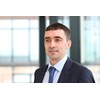Africa’s Energy Hotspots – three trends that will shape the next decade of African energy
A introduction to three trends that are shaping the future of African energy
3 minute read
Ian Thom
Research Director, Upstream

Ian Thom
Research Director, Upstream
Ian brings 18 years of experience to his role as head of regional analysis for Europe, Russian, Caspian and Africa
Latest articles by Ian
-
Opinion
Namibia faces setback as Shell downgrades oil discoveries
-
Featured
Upstream oil & gas regions 2025 outlook
-
Opinion
ADNOC acquires stake in Rovuma LNG from Galp
-
Opinion
Global upstream: the biggest topics
-
Opinion
Africa’s Energy Hotspots – three trends that will shape the next decade of African energy
-
Opinion
Navigating Nigeria’s changing oil and gas landscape
Five countries make up five out of every six ‘barrels’ of oil and gas produced in Africa: Algeria, Nigeria, Libya, Egypt and Angola. But their assets are mature, and production for all five peaked between 2005 and 2010.
The big-5 legacy producers underpin Africa’s oil and gas output today at around 10 million boe/d. They will remain incredibly important to the continent, but the future of upstream oil and gas in Africa will also be shaped by growth in new countries and the emergence of new investment themes.
We are starting to see how this will play out and are watching three trends or hotspots closely:
- Deepwater exploration is going from strength to strength with activity across the continent in new countries and basins.
- Gas is growing at a much faster pace than oil, driven by domestic gas and LNG projects.
- The corporate landscape is changing with indigenous and African focused companies playing a bigger role.
I will be dicussing these trends in more detail at an upcoming event hosted by Frontier. Sign up to attend.
Deepwater exploration has growing momentum
Deepwater exploration is extending from its traditional West Africa heartlands (Nigeria, Angola, Congo, Ghana, Equatorial Guinea) into places like Mozambique, Tanzania, Senegal, Mauritania and more recently, Cote d’Ivoire and Namibia. Success with big discoveries opening new plays has put Africa firmly on the exploration map.
Namibia is at the centre of the action today with eight discoveries from ten exploration wells since Shell’s Graff discovery in February 2022. TotalEnergies’ Venus field could be the biggest oil discovery in Sub-Saharan Africa. Galp’s Mopane oil discovery is another encouraging development. We expect to see more big wells from the blocks already being explored (TotalEnergies’ Kokerboom and Damara prospects) and on neighbouring blocks. Chevron, Woodside, and Rhino Resources have all shot seismic and may opt to drill a well.
The majors are well represented in West Africa deepwater exploration. Eni made two important discoveries in Cote d’Ivoire. Baleine was discovered in September 2021, achieving first oil less than 24 months later via a renovated FPSO. Its second major discovery was Calao in March 2024.
Elsewhere, ExxonMobil plans to drill the Arcturus-1 well in Angola’s frontier Namibe basin. Azule Energy (a BP/Eni JV), Equinor and Chevron have secured new deepwater blocks in Angola. TotalEnergies has firm prospects in South Africa (DWOB block) and Congo (Niamou Marine). Shell plans to explore Sau-Tome and Principe in a deepwater partnership with Petrobras.
Gas is growing faster than oil
Two-thirds of Africa’s gas is used domestically, but this is concentrated in Egypt, Algeria and Nigeria. There is potential for wider gas market development, although end-users are typically price sensitive, and only the lowest cost resources close to industry or power generation centres will be viable for domestic sales. And this is a priority – specific gas terms are being established in several countries to accelerate investment.
Export projects can underpin development of higher cost or more remote resources. LNG has a long history in the continent, but one exciting theme we are seeing is floating LNG (FLNG). Gas that might otherwise be stranded has a new route to market. It started in Africa with Cameroon FLNG – a small 1.4 million tonnes per annum (mmtpa) project which loaded its first cargo in 2018. In 2022, Eni completed an ambitious 3.4 mmtpa Coral Sul project in Mozambique. And in February this year Marine XII FLNG in Congo loaded its first LNG cargo. A second vessel should see capacity reach 3 mmtpa by 2026.
BP’s 2.3 mmtpa Greater Tortue Ahmeyim project in Senegal/Mauritania should be the next to start up. FLNG has found a niche in Africa, and we expect much more to come.
A shifting corporate landscape
This is most evident in Nigeria with four major deal announcements: ExxonMobil/Seplat, Eni/Oando, Equinor/Chappal Resources and Shell/RAEC. While approval and completion of these deals is pending, the trend is clear. Indigenous and African focused companies are stepping up and will play a bigger role in Nigeria’s onshore and shallow-water sector. It is also evident in Angola – the latest onshore licensing round saw local players and African focused companies winning almost all blocks. Etu Energies, ACREP, Serinus Energy, Afentra and Effimax Energy were all awarded acreage.
There is something for everyone in Africa. The big deepwater exploration wells and LNG projects will remain the domain of major IOCs. Smaller indigenous and African focused companies will expand their onshore and shallow water E&P activities.







